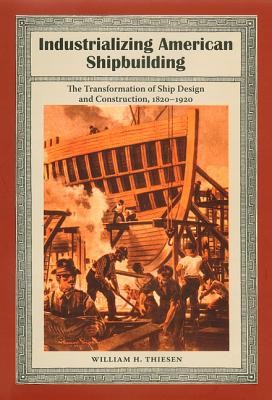
- We will send in 10–14 business days.
- Author: William H Thiesen
- Publisher: University Press of Florida
- ISBN-10: 0813029406
- ISBN-13: 9780813029405
- Format: 16.2 x 23.6 x 2.7 cm, hardcover
- Language: English
- SAVE -10% with code: EXTRA
Reviews
Description
Throughout the 19th century, the shipbuilding industry in America was both art and craft, one based on tradition, instinct, hand tools, and handmade ship models. Even as mechanization was introduced, the trade supported a system of apprenticeship, master builders, and family dynasties, and aesthetics remained the basis for design. Spanning the transition from wood to iron shipbuilding in America, Thiesen's history tells how practical and nontheoretical methods of shipbuilding began to be discarded by the 1880s in favor of technical and scientific methods. Perceiving that British warships were superior to its own, the United States Navy set out to adopt British design principles and methods. American shipbuilders wanted only to build better warships, but embracing British practices exposed them to new methods and technologies that aided in the transformation of American shipbuilding into an engineering-based industry. American shipbuilders soon improvised ways to turn U.S. shipyards into state-of-the-art facilities and, by the early 20th century, they forged ahead of the British in construction and production methods. The history of shipbuilding in America is a story of culture dictating technology. Thiesen describes the trans-Atlantic exchange of technical information that took place during this era and the role of the U.S. Navy in that transfer. He also profiles the lives of individual shipbuilders. Their stories will inspire enthusiasts of ships, shipbuilding, and shipbuilding technology, as well as historians and students of maritime history and the history of technology.
EXTRA 10 % discount with code: EXTRA
The promotion ends in 19d.18:06:32
The discount code is valid when purchasing from 10 €. Discounts do not stack.
- Author: William H Thiesen
- Publisher: University Press of Florida
- ISBN-10: 0813029406
- ISBN-13: 9780813029405
- Format: 16.2 x 23.6 x 2.7 cm, hardcover
- Language: English English
Throughout the 19th century, the shipbuilding industry in America was both art and craft, one based on tradition, instinct, hand tools, and handmade ship models. Even as mechanization was introduced, the trade supported a system of apprenticeship, master builders, and family dynasties, and aesthetics remained the basis for design. Spanning the transition from wood to iron shipbuilding in America, Thiesen's history tells how practical and nontheoretical methods of shipbuilding began to be discarded by the 1880s in favor of technical and scientific methods. Perceiving that British warships were superior to its own, the United States Navy set out to adopt British design principles and methods. American shipbuilders wanted only to build better warships, but embracing British practices exposed them to new methods and technologies that aided in the transformation of American shipbuilding into an engineering-based industry. American shipbuilders soon improvised ways to turn U.S. shipyards into state-of-the-art facilities and, by the early 20th century, they forged ahead of the British in construction and production methods. The history of shipbuilding in America is a story of culture dictating technology. Thiesen describes the trans-Atlantic exchange of technical information that took place during this era and the role of the U.S. Navy in that transfer. He also profiles the lives of individual shipbuilders. Their stories will inspire enthusiasts of ships, shipbuilding, and shipbuilding technology, as well as historians and students of maritime history and the history of technology.


Reviews